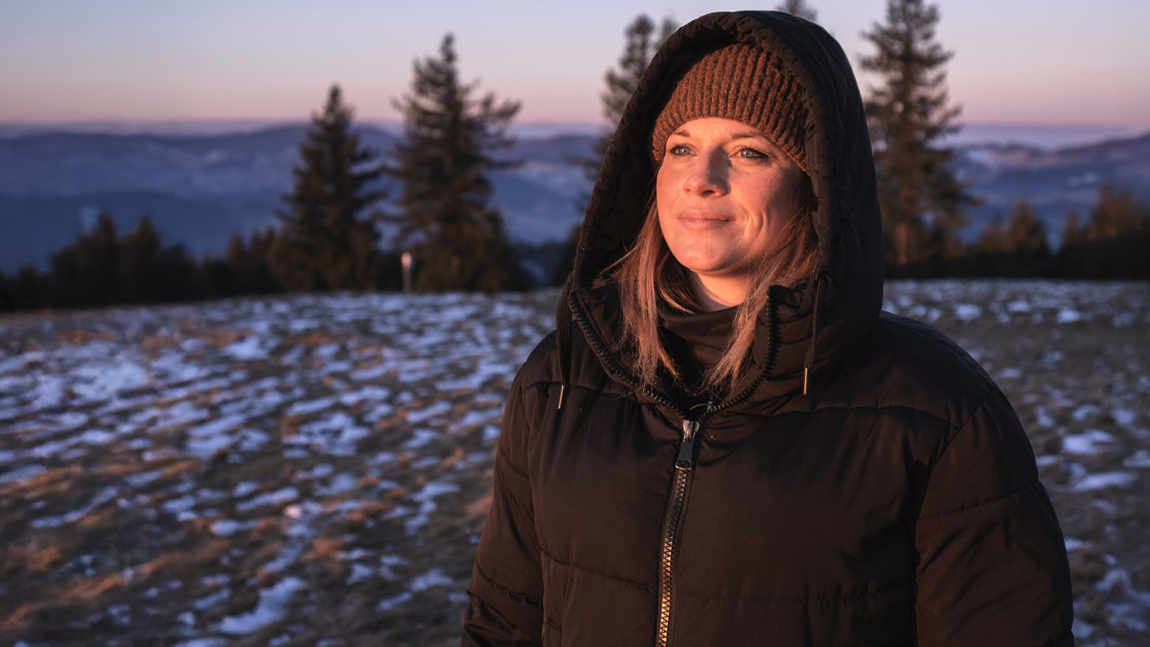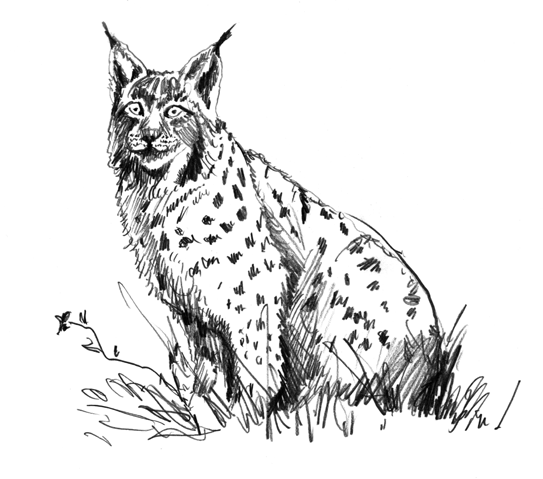

FLORIANE TANNEUR : Pas de loup, oeil de lynx
In the Tracks of the Wolf and the Lynx
Floriane grew up in a rural environment, fascinated by large predators. As a child, she dreamt of studying them. However, she initially took a different path in the corporate world, spending ten years training in nature management and conservation. Since the natural return of wolves to the Mercantour region in 1992, she has followed their movements, convinced that they would one day reappear in her home region, Rhône.
In 2021, Floriane founded AssoCohab. Together with Marc Benoît, a doctor in ecology and animal biology, she conducts research on the presence of large carnivores in the region. “You need a touch of madness, a lot of humility, and enough self-confidence to track these species in an area so far removed from their usual range…” Floriane smiles.
One morning in April 2021, the first wolf in the Rhône department was captured on film—the first sighting in a century. And in 2023, she and her team spent ten months tracking a lynx!
Where Are You, Wolf?
Wolves and lynxes are elusive species, rarely seen. Their presence is often detected only through indirect signs: fur, droppings, footprints, blood traces, and predation on wild or domestic animals. “Camera traps are essential in our monitoring methodology; they are invaluable allies,” Floriane explains. These tools help track large carnivores and contribute to scientific knowledge about wolf and lynx biology. Both species are protected and listed on the IUCN Red List.
“The more we study nature, the more we see its incredible ability to regenerate.”
A Rigorous and Innovative Methodology
To ensure effective monitoring of wolves and lynxes, Floriane and her team develop their research methodology in collaboration with the OFB Wolf-Lynx Network and relevant departmental institutions. Each clue and sample collected enriches a national scientific database.
Through the “Lynx Eye” programme, Floriane collects faeces for DNA analysis to study the diet and genetics of Eurasian lynxes, a crucial step in assessing population health and defining appropriate conservation measures.
In parallel, Floriane and her team work with the French National Forests Office (ONF) to conduct broader wildlife monitoring, improving knowledge of biodiversity in Rhône’s forests. Recently, a young German Shepherd named Volt, with an exceptional sense of smell, joined the team—an invaluable asset in detecting wolf and lynx droppings.
Raising Awareness and Addressing Political Issues
Floriane is also committed to raising public awareness of the challenges related to the presence of wolves and lynxes, which are as much political as ecological. “Beyond species coexistence, it’s a matter of economic and political impact,” she explains. “For farmers to receive financial support, the presence of predators must first be officially confirmed.”
Supporting Farmers Against Predation
Beyond research, AssoCohab helps farmers implement livestock protection strategies. “The key is anticipation,” says Floriane. Identifying high-risk areas and deploying human, canine, or technical solutions, while training farmers, helps reduce losses.
For farmers who experience the traumatic impact of wolf predation, AssoCohab provides essential support. “They know they can rely on us. Morning, evening, Sundays—we’re always there,” Floriane affirms.
Discover the Association
AssoCohab

